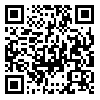Volume 12, Issue 2 (March & April 2021)
BCN 2021, 12(2): 291-300 |
Back to browse issues page
Download citation:
BibTeX | RIS | EndNote | Medlars | ProCite | Reference Manager | RefWorks
Send citation to:



BibTeX | RIS | EndNote | Medlars | ProCite | Reference Manager | RefWorks
Send citation to:
Saadat Z, Sinaei E, Pirouzi S, Ghofrani M, Nami M. Cortical Activity During Postural Recovery in Response to Predictable and Unpredictable Perturbations in Healthy Young and Older Adults: A Quantitative EEG Assessment. BCN 2021; 12 (2) :291-300
URL: http://bcn.iums.ac.ir/article-1-1533-en.html
URL: http://bcn.iums.ac.ir/article-1-1533-en.html
1- Student Research Committee, School of Rehabilitation Sciences, Shiraz University of Medical Sciences, Shiraz, Iran.
2- Department of Neuroscience, Neuroscience Laboratory, School of Advanced Medical Sciences and Technologies, Shiraz University of Medical Sciences, Shiraz, Iran.
3- Department of Physical Therapy, School of Rehabilitation Sciences, Shiraz University of Medical Sciences, Shiraz, Iran.
4- Rehabilitation Sciences Research Center, Shiraz University of Medical Sciences, Shiraz, Iran.
2- Department of Neuroscience, Neuroscience Laboratory, School of Advanced Medical Sciences and Technologies, Shiraz University of Medical Sciences, Shiraz, Iran.
3- Department of Physical Therapy, School of Rehabilitation Sciences, Shiraz University of Medical Sciences, Shiraz, Iran.
4- Rehabilitation Sciences Research Center, Shiraz University of Medical Sciences, Shiraz, Iran.
Abstract:
Introduction: To investigate the effects of predictable and unpredictable external perturbations on cortical activity in healthy young and older adults.
Methods: Twenty healthy older and 19 healthy young adults were exposed to predictable and unpredictable external perturbations, and their cortical activity upon postural recovery was measured using a 32-channel quantitative encephalography. The absolute spectral power and coherence z-scores of cortical waves were analyzed through a 3-way mixed ANOVA.
Results: During postural recovery from predictable perturbations, older adults exhibited higher frontoparietal beta power and higher alpha and beta coherence during the late-phase recovery than the young individuals. After unpredictable perturbations, the older group showed lower alpha power in the early phase and higher beta power in the late phase as compared to the young group. Results for the group × time and group × location interactions in the older group showed a higher alpha and beta coherence over the late phase, a higher alpha coherence in F3−P3 and F4−P4 regions, and a higher beta coherence in the F4−P4 region compared to the younger group.
Conclusion: Our results revealed that the cortical activation after external perturbations increases with aging, particularly in frontoparietal areas. A shift from automatic (subcortical level) to attentional (cortical level) processing may reflect the contribution of attentional resources for postural recovery from an external threat in older individuals.
Methods: Twenty healthy older and 19 healthy young adults were exposed to predictable and unpredictable external perturbations, and their cortical activity upon postural recovery was measured using a 32-channel quantitative encephalography. The absolute spectral power and coherence z-scores of cortical waves were analyzed through a 3-way mixed ANOVA.
Results: During postural recovery from predictable perturbations, older adults exhibited higher frontoparietal beta power and higher alpha and beta coherence during the late-phase recovery than the young individuals. After unpredictable perturbations, the older group showed lower alpha power in the early phase and higher beta power in the late phase as compared to the young group. Results for the group × time and group × location interactions in the older group showed a higher alpha and beta coherence over the late phase, a higher alpha coherence in F3−P3 and F4−P4 regions, and a higher beta coherence in the F4−P4 region compared to the younger group.
Conclusion: Our results revealed that the cortical activation after external perturbations increases with aging, particularly in frontoparietal areas. A shift from automatic (subcortical level) to attentional (cortical level) processing may reflect the contribution of attentional resources for postural recovery from an external threat in older individuals.
Type of Study: Original |
Subject:
Clinical Neuroscience
Received: 2019/06/17 | Accepted: 2020/02/16 | Published: 2021/03/1
Received: 2019/06/17 | Accepted: 2020/02/16 | Published: 2021/03/1
Send email to the article author
| Rights and permissions | |
 |
This work is licensed under a Creative Commons Attribution-NonCommercial 4.0 International License. |








